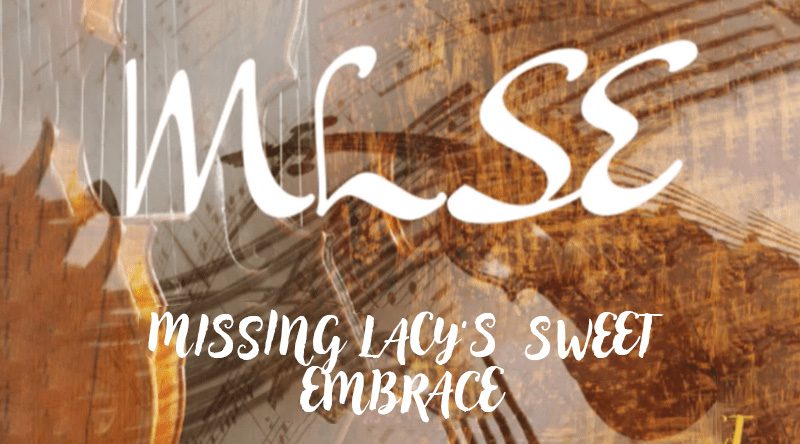MLSE, Inc.® Programs and Offerings for Therapeutic Music
MLSE, Inc.® Therapeutic Music Benefits
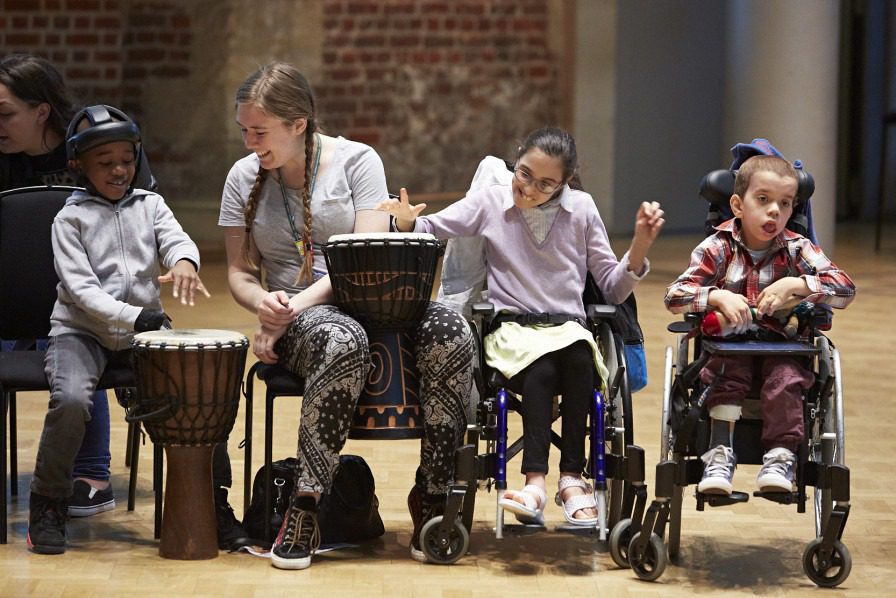
- In Oklahoma, about 1 in 51 children have been identified with Autism Spectrum Disorder (ASD), which ranks the state 29th in the nation for autism prevalence. However, the prevalence of ASD is higher in school-aged children, with 1 in 34 children diagnosed. The counties with the highest prevalence of ASD are Ottawa, Logan, Craig, Wagoner, and Cleveland.
- More than one in six Oklahomans, or 17.5%, have disabilities.
- Oklahoma has limited mental and behavioral health services for youth. In 2022, only nine counties in Oklahoma had any child and adolescent psychiatrists.
- In the 2023 fiscal year, Oklahoma spent over $5 million to send 49 children out of state for treatment
- 11.3% of children ages 5–17 had been diagnosed with Attention Deficit Hyperactivity Disorder (ADHD). Boys were more likely to be diagnosed than girls, and the prevalence was higher in children ages 12–17 than in those ages 5–11.
There’s no denying that music has a strong psychological impact. Different types of music can significantly impact a person’s mood, helping them delve deeper into their consciousness to process a wide range of emotions. And it’s not just because music evokes feelings; there’s research-backed science behind the effect therapeutic music has on us.
Studies have demonstrated that music impacts numerous parts of the brain, including those involved in emotion, cognition, sensory, and movement. In fact, therapeutic music for mental health has been utilized as a therapeutic scaffold.
Therapeutic music is successful in treating a wide range of physical and mental healthcare issues and behavioral disorders. Music-based interventions may be helpful for health conditions that occur during childhood, adulthood, or aging.
- Emotional Expression: Therapeutic music can help people explore their emotions and develop healthy coping mechanisms.
- Mental Health: Therapeutic music can help with anxiety, depression, and stress. It can also help people heal from trauma and build resilience.
- Social Skills: Therapeutic music can help people build social skills and improve communication.
- Cognitive Function: Therapeutic music can help improve cognitive function and memory recall.
- Pain Management: Therapeutic music can help reduce pain associated with a variety of health conditions.
- Physical Coordination: Therapeutic music can help improve coordination, motor functions, and movement.
- Quality of Life (QoL): Therapeutic music can help enhance quality of life and promote recovery.
- Community Building: Therapeutic music sessions can foster a sense of community and belonging.
- Family Bonding: Therapeutic music can promote family bonding and support.
MLSE, Inc.® Programs and Services in Southwest Oklahoma and the state of Oklahoma thrives on providing therapeutic music to bridge gaps in area, our state that do not have therapeutic music programs for children that have been abused, neglected, experienced severe trauma, need short-term and long term care and our neurodivergent spectrum children and youth (Autism, ADHD, Learning Disabilities and PTSD) and low-income and impoverished children and families. We have done rigorous research that shows these programs are lacking for these children as we provide unique warmhearted experience to children who have these physical disabilities and behavioral disorders for not only these children but for their families and our communities who need these services.
Therapeutic music is a non-clinical and a clinical intervention that helps improve verbal and nonverbal communication skills, motor skills, early vocalization, joint attention socialization, and quality of life (QoL). One aspect is important to identify these disabilities and disorders as young as we can to help with their development and health as they deserve their human rights to have an advocate for these daily issues.
MLSE, Inc.® Programs welcome to all ages. For children and youth with physical disabilities, behavioral disorders and underprivileged, we focus on the ages of 5-18. For our Veterans with brain trauma, we focus on ages of 20-80 and our Alzheimer’s and dementia clients we focus on ages of 50-95. We determine adaptive programs to bring out more attentive to auditory stimuli so they often feel more connected to music and can understand language more efficiently through music.
Music and language have overlapping characteristics such as tempo and pitch, which is why music is a very effective intervention for improving language skills with those in the neurodivergent spectrum. There are many different approaches to therapeutic music, each using music, melody, pitch, and rhythm to activate different parts of the brain to work on the developmental, healing and emotional progress.
MLSE, Inc.® Traditional and Innovative Programs, simple, and fun therapeutic music activities provided can be of benefit to these individual and their families who desire interest and motivation for music. We incorporate simple lessons and plans to provide music at home, outreach community centers and clinical facilities.
MLSE, Inc.® Children

Therapeutic music tailors music-based interventions through traditional and innovative technology programs for children who have been abused, neglected, suffered severe trauma, need short-term and long-term healthcare and these who are on the neurodivergent spectrum (Autism, ADHD, Learning Disabilities and PTSD). This personalized approach nurtures flexibility, creativity, variability, and tolerance for change.
Poverty can have detrimental effects on children’s psychological and social well-being as a result of the long-term adversity it imposes throughout childhood. Evidence suggests that underprivileged preschool children are more prone to psychological and social problems than their counterparts from high-income families.
By offering therapeutic music in Jackson County, Oklahoma and the State of Oklahoma with MLSE, Inc.® we can enhance these children’s daily lives with therapeutic music that have these healthcare and behavioral challenges. We work collaboratively with Children’s Hospitals and Clinical Center through intervention provisions for a variety of physical and mental health goals.
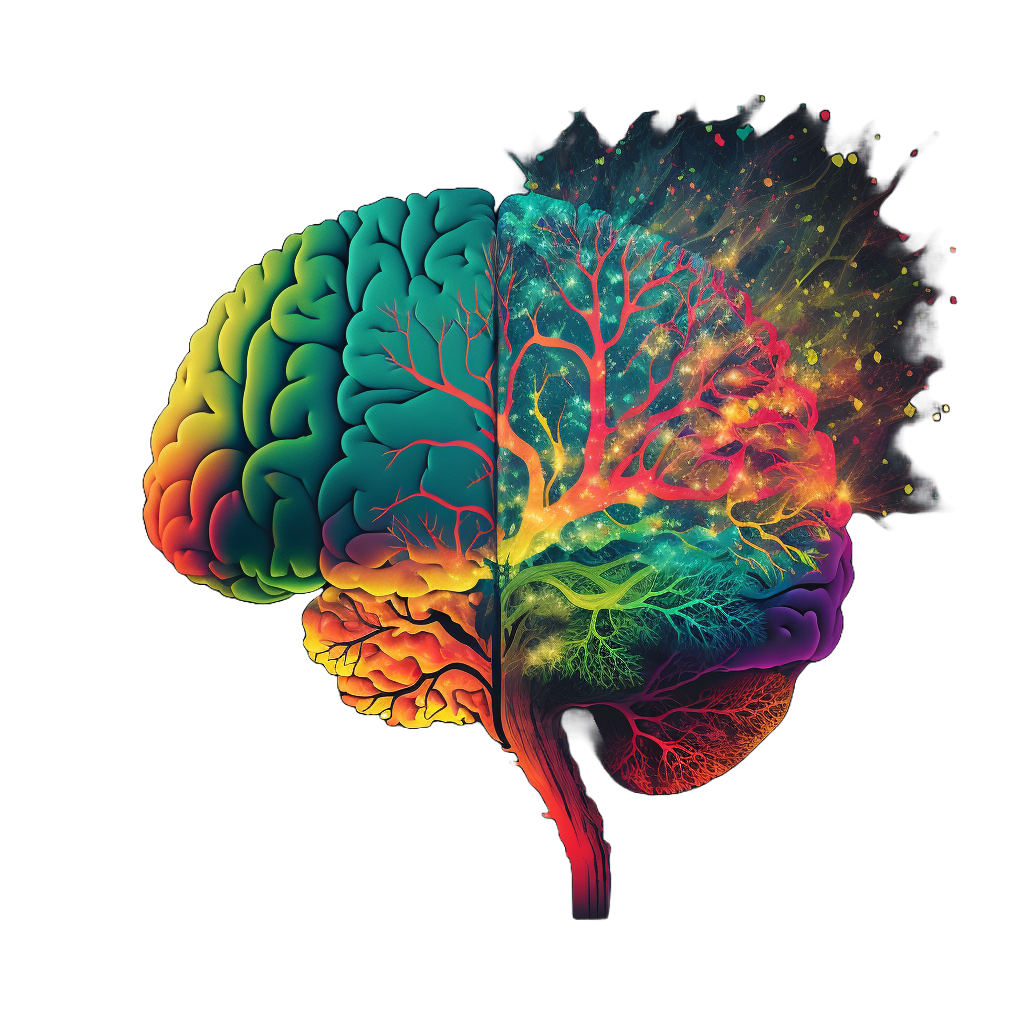

Oklahoma has higher rates of child abuse and neglect than the rest of the United States:
- Oklahoma has 15.4 substantiated cases of child maltreatment per 1,000 children, compared to 8.4 nationally.
- Risk factors for child abuse and neglect in Oklahoma include poverty, mental health needs, community violence, and substance use.
- The most common types of child maltreatment in Oklahoma are physical abuse, sexual abuse, neglect, and emotional or psychological abuse.
- The most common perpetrator of child maltreatment in Oklahoma is a biological or step-parent.
- There were 14,685 child victims of abuse or neglect in Oklahoma in 2023, at a rate of 15.4 children per 1,000. This translates to a 2.6% increase since 2016.
- Of the 14,685 children, 11,374 were first time victims. The largest age group of victims was children under one, representing 2,435 of the 14,685
- The number of reported forcible sex offenses in Oklahoma schools increased from 2,500 in 2009 to 13,921 in 2023.
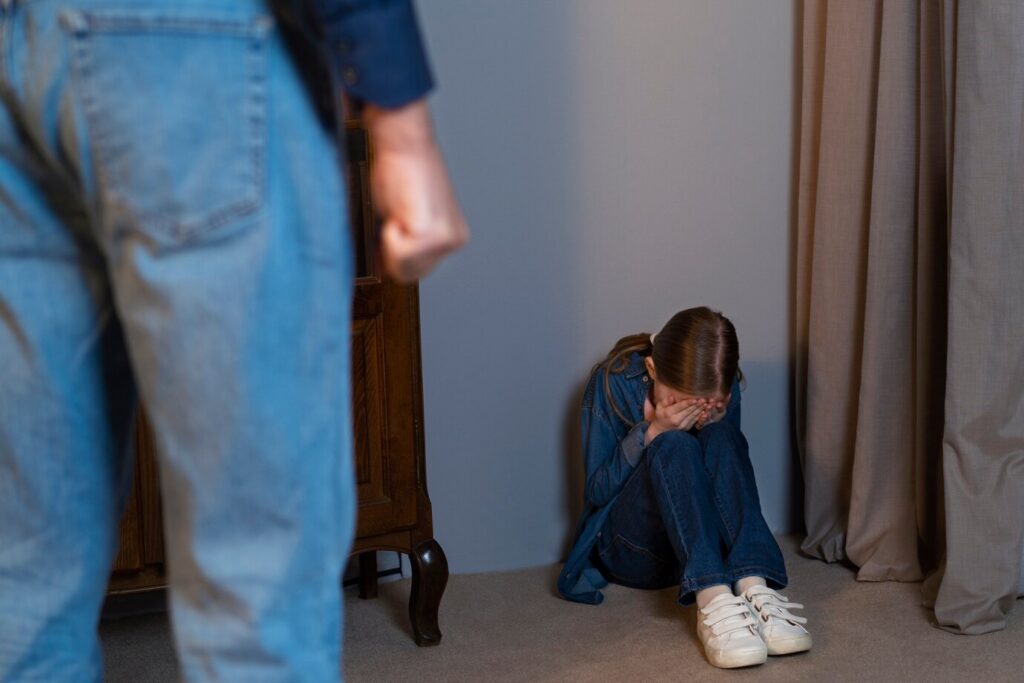
Oklahoma has a high poverty rate, and poverty is concentrated in communities of ethnicity:
- Black Oklahomans: 28.1% of Black Oklahomans live in poverty, which is more than 1 in 4 people.
- Latino Oklahomans: 21.5% of Latino Oklahomans live in poverty.
- American Indians/Alaska Natives: 19.8% of American Indians/Alaska Natives live in poverty.
- White Oklahomans: 13.4% of White Oklahomans live in poverty.
- Oklahomans of two or more races: 18.7% of Oklahomans of two or more races live in poverty.
MLSE, Inc.® uses therapeutic music to provide low-income children, youth and families in various settings including homeless centers and shelters. Our impoverished programs is tailored for child-parent interaction through our music programs.
Our most common therapeutic music interventions are songwriting, music listening and improvisational instrument playing to help express and regulate emotions.
- A meta-analysis of 32 scientific articles found that the estimated incidence of PTSD among veterans ranged from 1.09% to 34.84%.
- From 2015 to 2023, the Veteran suicide rate in Oklahoma was 47.0 per 100,000 population, which was twice the rate of non-veterans.
- A 2022 study found that 1 in 4 active-duty members showed signs of a mental health condition.
- In 2022, there were 244,334 veterans living in Oklahoma.
Creating and listening to music can greatly benefit our health and mental well-being. Therapeutic music helps veterans deal with memory impairments, speech disorders, head traumas, and other challenges by providing a creative therapeutic outlet.
Therapeutic music has been instrumental in supporting military personnel, veterans, and their families for 70 years. It offers a non-verbal means for veterans to connect with others while navigating mental and physical obstacles. Therapeutic music is a vital part of treatment delivered in military treatment facilities and VA medical centers nationwide.
“When we’re up here, we’re working as a team like when we were in the military. There’s this cohesiveness and camaraderie when we’re on stage. You don’t have to be isolated and if you’re not talkative, you can still be a part of something when you’re playing music with others.”
According to the Alzheimer’s Association, the following are some statistics for Alzheimer’s in
Oklahoma in 2023:
- Approximately 70,500 people in Oklahoma are living with Alzheimer’s dementia
- An estimated 108,000 people in Oklahoma are unpaid caregivers for someone with Alzheimer’s or dementia
- Alzheimer’s caregivers in Oklahoma provide an estimated 189 million hours of unpaid care, valued at $3 billion
- The cost of Alzheimer’s to the state Medicaid program is $611 million
- Alzheimer’s is the fifth-leading cause of death for Americans 65 and older. In 2023, an estimated 6.7 million Americans over 65 are living with Alzheimer’s dementia.
Music evokes positive emotions, triggers memories, and reduces anxiety, stress, and depression in seniors. Listening to familiar songs or participating in therapeutic music lifts their mood, boosts their self-esteem, and fosters comfort and connection.
The brains of older adults feel rewarded when listening to music, regardless of their musical preferences. Researchers continue to investigate how music affects healthy brains as they age, which will help future research into Alzheimer’s and dementia.
Classical music, for example, improves overall cognitive function in older adults. Specifically, processing speed improved with high-tempo, upbeat music, and memory improved regardless of tempo. Listening to music pushes our brains to work hard to make sense of what we hear. This keeps the brain active and agile, improving memory and functions across the board.
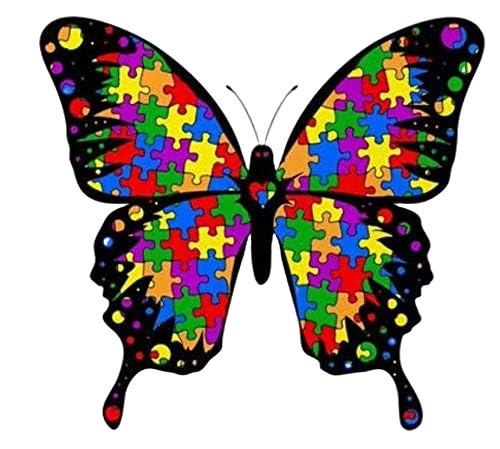
MLSE, Inc.® Individual Sessions
Our sessions are tailored to meet the needs of each client We have lesson plans and progress reports to monitor the development of life skills with the exploration of music through percussion, songwriting, piano, movement, guitar, creative improvisation, music technology and the client’s own voice when applicable.
MLSE, Inc.® Group Sessions. Our therapeutic music groups are more structured than individual sessions. The structural element of music is very effective in bringing order to a group of individuals who possess different energy levels, methods of communication and emotions on any given day. MLSE, Inc.® uses terms like Welcome Songs, rhythmic and melodic improvisation, action songs and a Goodbye Song at end of each session.
MLSE, Inc.® Improvisation Sessions. We have developed a fun and less structured program as another conduit for all current emotions. In these sessions, we allow more freedom to choose during each session of creating a melody, rhythm, song or an instrumental piece. This program is popular as it is a pure way of working towards understanding, acceptance and fostering their own identity make-up.
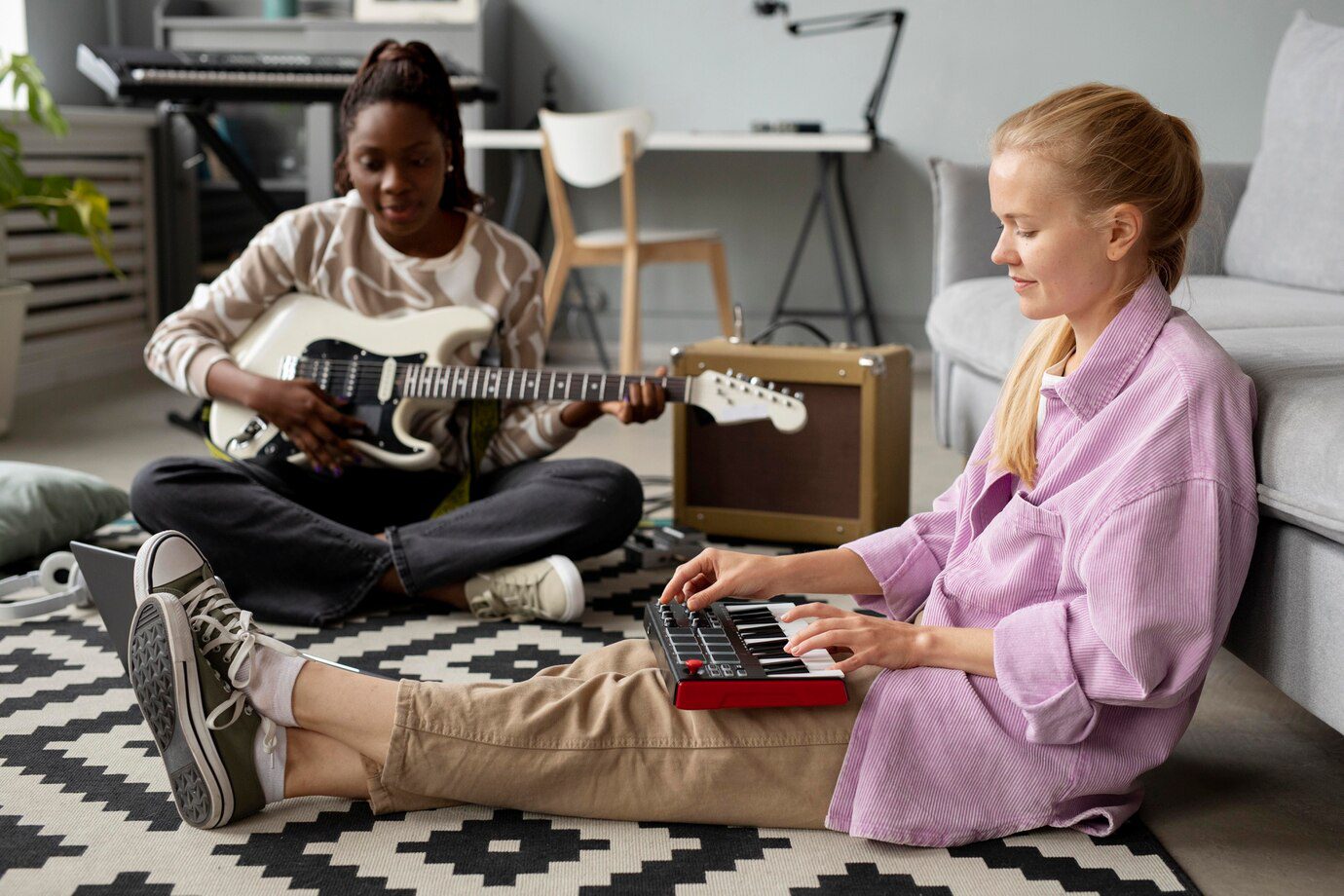
MLSE, Inc.® Activities
DRUMMING: Drumming is an excellent music tool for inducing light-hearted fun, positive addiction, and unhindered engagement. Drumming also has a positive social connotation and brings people together as part of a group.
VIBRO-ACOUSTIC THERAPY: Vibro-Acoustic Therapy or VAT is a scientific approach of combining low frequency vibrations with the resonations of slow-paced music.
CREATE MUSIC: MLSE, Inc.® utilizes pre-composed songs in re-creative therapeutic music. For example, a group can sing a favorite song or play instruments to a popular tune. We also use Improvising to work with clients to create music and sounds that reflect their feelings. This can involve singing and/or playing instruments.
Composing music focuses on a client’s therapeutic needs. These clients, our audio engineers and music producers, can compose music in the moment, develop compositions from previously improvised ideas, or compose completely on their own. Lastly, MLSE, Inc.® uses “mapping” our families. We use beat making and recording software to create a song that maps out a family. The client can choose a loop or live sound for each family member to reflect who they are.
NOVELTY: This increases motivation. For example, sing in a silly voice, create sound effects, or bring out the balloons! We have found this can be effective, specifically with children and our Alzheimer’s patients if the individual or group appears fatigued or more difficult to engage during instruction.
MUSICAL REWARD: MLSE, Inc.® assists individuals and groups, for example, to identify colors on a colored xylophone/glockenspiel. If we are working on motor skills by piano finger exercise, then we teach the “Old McDonald” as also an example of a reward.
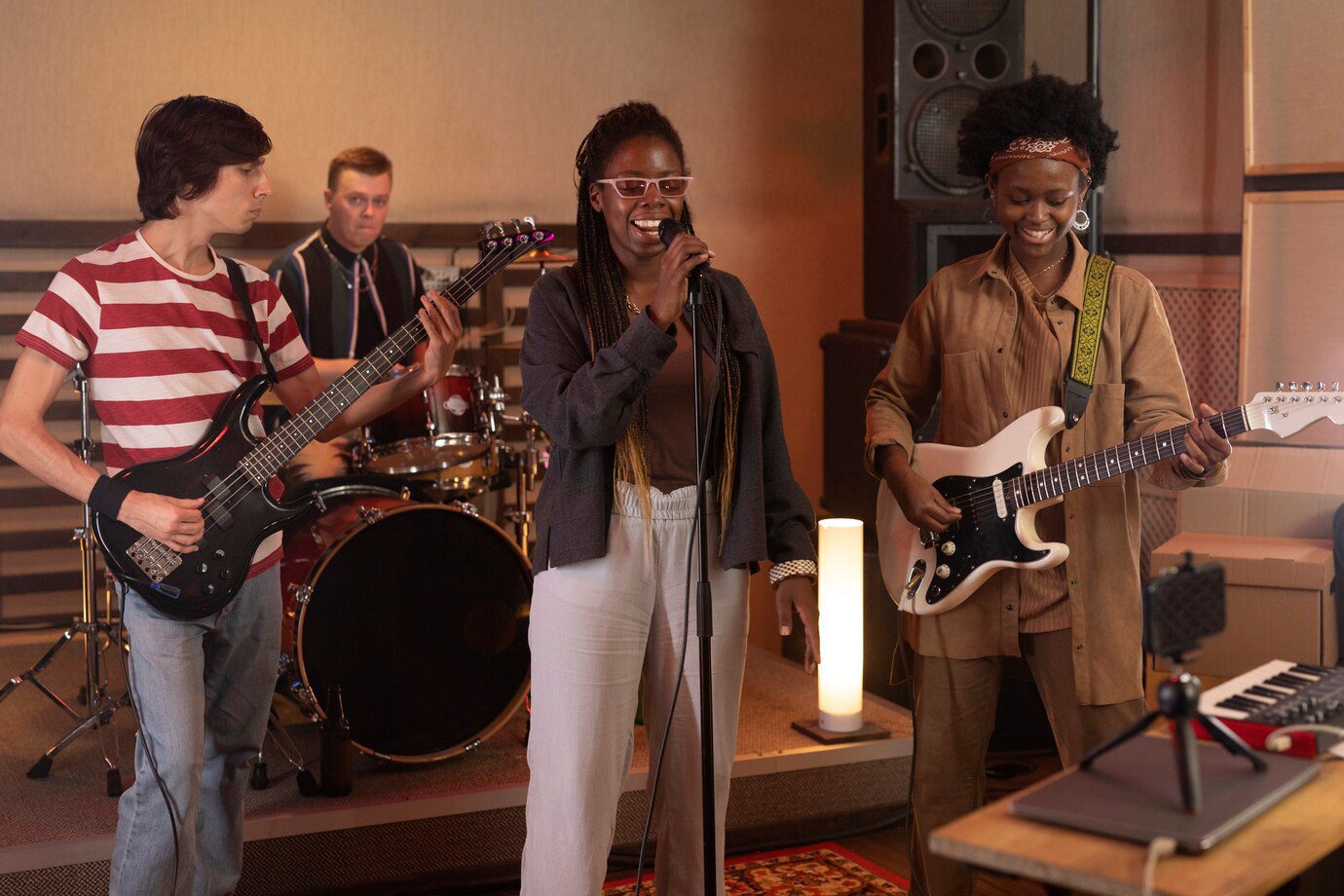
HELLO SINGING CIRLCE:
Although it seems simple, singing songs can help with development and rehabilitation. When one participates in singing songs, they often become calm and develop a greater attention span. A good activity we do with these targeted clients, where we can, is to have a singing circle. We have these clients simply stand in a circle and sing the popular Hello Song. We’ve experienced after a few days of participating in this activity, most tend to memorize the lyrics and begin singing along. Once they feel comfortable and anticipate this activity, you can start adding in simple hand gestures, such as clapping, to get them to practice rhythm.
RHYTHM PATTERNS:
Besides singing songs, rhythm patterns can also increase memory and focus. As our staff and volunteers provide rhythmic songs, we have these groups try to mimic our hand gestures to the rhythm of the music. We create simple rhythm patterns using clapping. An example of this would be clap-pause-clap-clap-pause-clap. We teach this pattern and have them repeat it in a group. This activity causes the clients to have to focus and increase their memory. These children/youth, Veterans and Alzheimer’s patients become more comfortable, clapping patterns become more
complex.
MOTOR IMITATION:
MLSE, Inc.® use a variety of motor imitation song that teaches kids movements that provide sensory and regulatory input such as brushing legs, brushing arms and self-hugs. These three (3) groups who
have sensory sensitivities may avoid being touched by others and this activity allows them to receive sensory input by performing the actions themselves. Each session we bring in something tactile that
is typically a musical instrument. We passionately playing instruments to target following directions, impulse control, bilateral coordination, gross and fine motor skills, crossing midline turn taking, and awareness of others.
SENSORY MOTOR SONGS:
We know that bringing out instruments can be challenging for all as volume increases and passing and sharing instruments can be tough. We follow Instruments with a sensory motor song which is typically a motor imitation song that helps children to regulate and ready their bodies and brains for the end of the group.
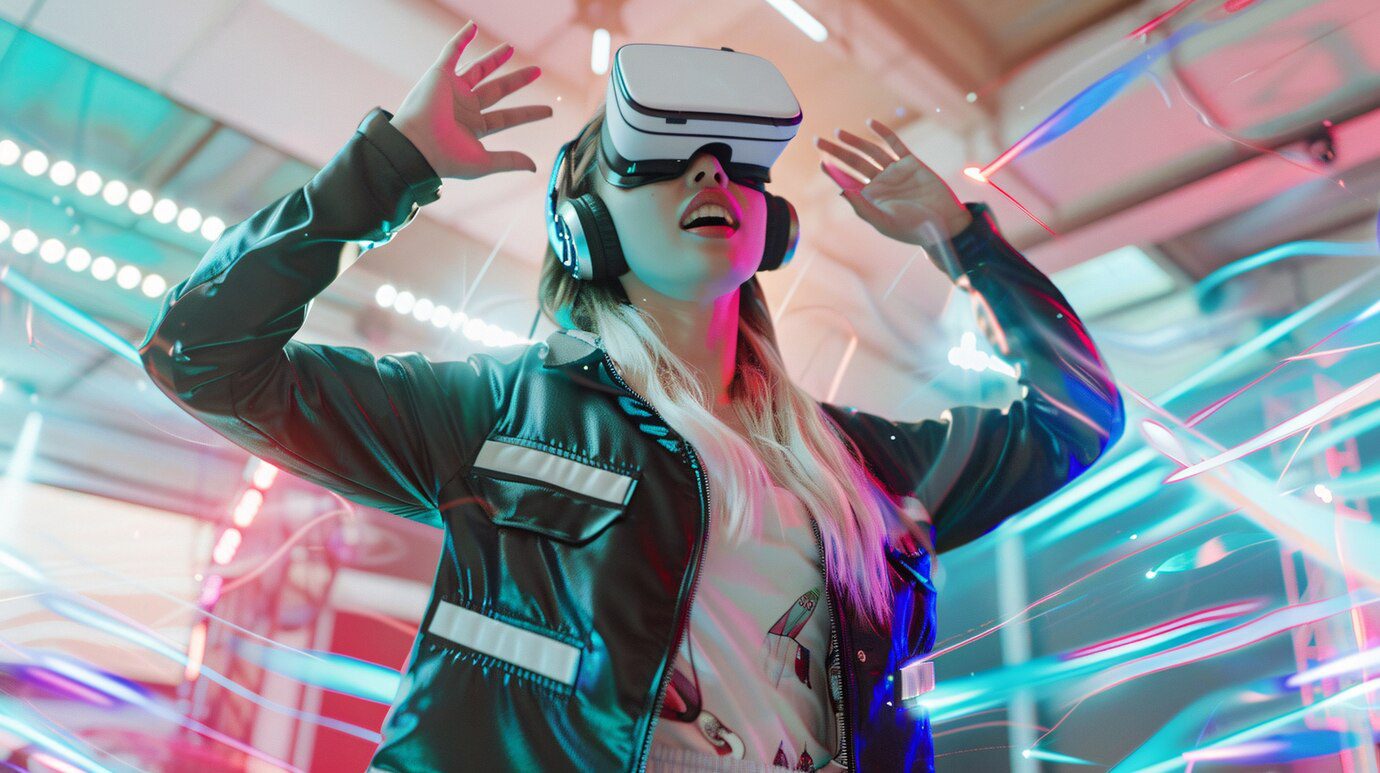
TECHNOLOGY AND VIRTUAL REALITY (V/R):
There has been a vast and exponential growth in electronic assistive technologies. This has in part been due to technological developments in computer-based multimedia technology such as mobile devices and motion capture sensors (e.g. Meta, HTC/Vive, Apple). This technology has advanced what was once novel approaches to computer interaction into the public domain, moving far beyond the traditional desktop computer. When applied to therapeutic music, new technologies that provide alternative control that enables users with complex needs the accessibility to play the technology as they would a conventional musical instrument. This plays a significant role in delivering the creative freedom which is often central to the key outcomes of interactive music intervention as digital musical instruments are not new to therapy intervention.
Virtual reality (VR) is a computer-generated, three-dimensional simulation that allows an individual to interact using a head-mounted display (HMD) and various controllers or hand-tracking algorithms. Headtracking and hand-tracking systems allow for one-to-one user movement within a generated virtual environment, creating an illusion of presence. This experience is strengthened by multimodal stimuli including visual, spatial, auditory, and haptic feedback.
VR medium continues to expand beyond the use of pure entertainment. VR programs have beendeveloped for the military, manufacturing, and surgical training. Video games, and more recently VR, have been used to provide alternative modes of education in schools. The malleable nature of virtual development offers extraordinary possibilities in its use and purpose. The following are part of our unique of our technology activities:
CREATE SOUNDTRACK:
MLSE, Inc.® has our clients with the help of audio engineering our learning staff, create customized soundtracks for listening during a VR experience. Over a course of 40 weeks, we have the students create soundtracks using a Meta Quest 2 V/R headgear. The soundtrack app(s) are downloaded onto the VR headset. The video musical content allows our students to be in a natural environment with natural sounds. The soundtrack selections are streamed from Apple Music onto an iPhone, iPad or any iOS device with noise reduction, comfort headphones worn over the VR headset.
LIVE! ON STAGE VIRTUAL REALITY
As many of these can experience interaction anxiety, MLSE, Inc.® has a V/R application that allows the students to sing on stage in front of a virtual audience. The application runs on Meta Quest 3 V/R and has a virtual concert hall designed in containing a state with a microphone. There virtual concert hall has chairs for the virtual audience where the audience enters the hall as well as the V/R screen. The lyrics of the rotating songs to be performed appear on a smaller window of the virtual screen with a countdown of 4 to 0 before students start singing in front of the visual audience. Before we provide a virtual audience, these clients have a virtual microphone on the stage facing the empty chairs to slowly expose the user to the situation, providing time to familiarize themselves with the virtual environment.
Once the client is comfortable with the stage and the concert hall, a non-diegetic voice will announce, “Hello, welcome to the concert hall. Are you ready to make some noise? If you are ready, say come in outload.” Once the clients say come in, the Windows-based keyword recognizer is used
to detect the key phrase “come in” via the Meta Quest 2 microphone. We give a 20 second window for clients to say, “come in” and then the announcer will say, “Please say come in once you are ready so we can start.” Once the user has said “come in” the virtual audience will walk through the gate of the concert hall and find their seats with the sounds of footsteps. There are four different virtual audience animations with a variety of facial expressions and body movements. If the client is not
singing, the audience will sit still. If the client is singing, the virtual audience will clap their hands. As the student sings louder, the virtual audience will stand and clap their hands. At the end, the non-diegetic announcer will say, “Thank you, that was awesome!”
RHYTHM AND MATHEMATICAL APPROACH
With beamz interactive system and beamz interactive Jam V/R utilizing Meta Quest 2 V/R headgear, as an example, we have a variety of music and educational learning games. The beamz interactive applications, content, technology, and platforms enable us to create music, education experiences and therapy activities that enable anyone, at any age or ability, to experience making extraordinary music while simultaneously receiving a wide variety of learning, physical, cognitive, and other
therapeutic benefits. Through this activity, to use some iconic form of math learning to enhance the student’s rhythm and drumming techniques, studying piano, cello, trumpet (and others) and the interaction between mathematical concepts and the learning of music. We use symbolic forms (e.g., addition, subtraction, multiplication, and division) by means of musical, iconic forms (e.g., counting beats and dividing into measures. This immersive game environment helps with the facilitation of the process of the correlation of music and math using V/R.
SYNCHRONIZED DANCE MOVEMENT:
To develop gross motor skills, with most clinical studies use a control group with a non-musical movement activity, we took the excitement for our clients step further. We have virtual apps that allow the clients to perform synchronized dance movements. We use iOS apps OH Shape, Just Dance Now, Toca Dance, Hip Hop & Street Dance School, and Go Noodle Kids. These include a variety of soundtracks featuring chart-toppers from the 1960’s to present music through today’s biggest hits.
With different levels and unique routines choreographed for each song, there’s plenty to keep our clients dancing. There are different settings and chats for each app so the students to dance their hearts out.
We have individual-based sessions that last from 25-40 minutes twice a week for 40 weeks depending on age and need. As we assess the goals and needs of each individual and the family, we adjust the length of every session to promote the most comfortable and optimal setting. This
provides our staff to determine a more predictable schedule for these clients.
Our group sessions are 30-60 minutes, twice a week for 40 weeks as well and depends on the group needs, instead of at an individual level. We also adapt these schedules accordingly as we have to be sensitive, as at the individual level, to the group sensory trigger points. MLSE, Inc.® videos to record behavior, protection of clients and to record our metrical success or areas of improvement.

The main objectives of MLSE, Inc.® traditional and innovative technology therapeutic affinity activities include:
- A Musical Adventure
- Forming Learning Skills
- Decreasing Anxiety, Depression and Volatile Behavior
- Improving Self-Esteem.
- Enhancing Expressive and Receptive Communication
- Developing Coping Skills.
- Strengthening Fine and Gross Motor Skills.
- Increase Repetitive Behavior Skills
- Reduce Agitation
- Minimize Emotional Stress
*MLSE, Inc.® runs a 46-week program for all three (3) for our fiscal and calendar year (January 1st through December 31st). We allow clients and our staff/volunteers to focus on a family life balance for six weeks instead of a vigorous 52-week schedule.
Learn More
For more information about therapeutic music, don’t hesitate to Contact Us. We’d be happy to answer your questions about our therapeutic music.
